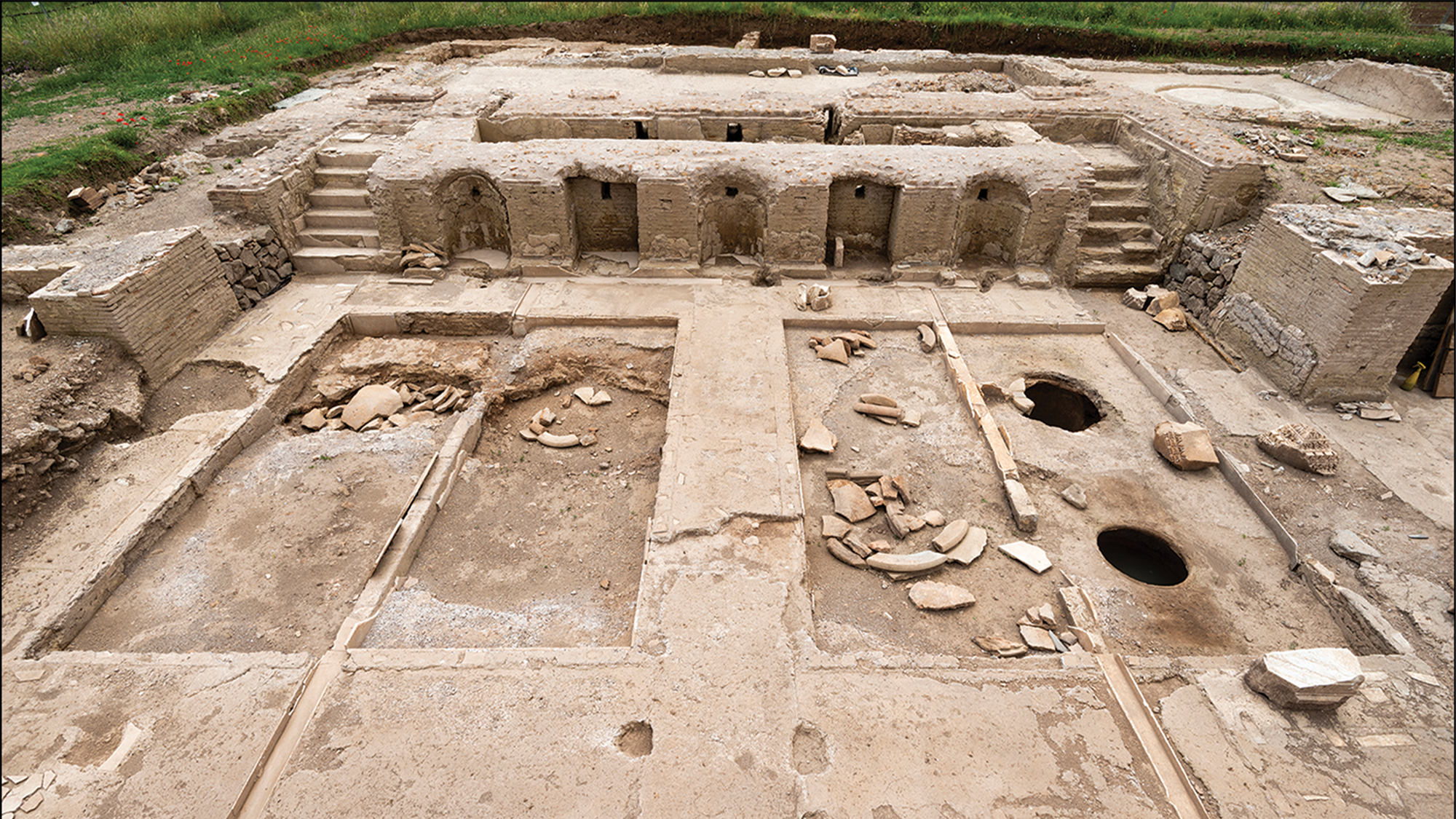

A team of archaeologists have uncovered a unique ancient Roman winery within the luxurious Villa of the Quintilii. The remains of this opulent villa are just to the south of Rome, Italy. The findings, published on April 17 in the journal Antiquity, detail the winery in the mid-third-century CE building that lies along the ancient Appian Way–a critical supply line for the Roman military.
The large villa was owned by the wealthy Quintilii brothers who served as consuls, one of the most powerful elected positions in the Roman Republic in 151 CE. Around 182 or 183 CE, Roman emperor Commodus had them killed and took possession of their properties, including this particular villa.
[Related: As Rome digs its first new metro route in decades, an archaeologist safeguards the city’s buried treasures.]
Archaeologists had previously documented the villa’s luxuries, including a giant bathing complex, statues, and colored marble tiling. One of the lesser known parts of the villa was a circus for chariot racing that was added during Commodus’ reign. During a 2017 and 2018 expedition to find the circus’ starting gates, the first hints of the hidden winery were discovered.
According to the study, the name Gordian is stamped into a wine-collection vat, which means that emperor Gordian III may have either built the winery or renovated it roughly around CE 238 to 244. The winery is located just beyond Rome’s city limits during antiquity, amidst orchards, farms, monumental tombs, and the villas of the super rich like the Quintilii brothers. It has standard winery features for this time, including two wine presses, a grape trading area, two presses, and a cellar sunk into the ground to store and ferment the wine in large clay jars.
“However, the decoration and arrangement of these features is almost completely unparalleled in the ancient world,” Emlyn Dodd, study co-author and archaeologist and assistant director at the British School at Rome, wrote in The Conversation. “Nearly all the production areas are clad in marble veneer tiling. Even the treading area, normally coated in waterproof cocciopesto plaster, is covered in red breccia marble. This luxurious material, combined with its impracticalities (it is very slippery when wet, unlike plaster), conveys the extreme sense of luxury.”
The facility also included multiple luxurious dining rooms with a view of wine-filled fountains. Within the marble-lined trading areas, enslaved workers would stamp down the harvested grapes. The crushed grapes were then taken to the two mechanical presses, and the resulting grape must was then sent into the three wine fountains. The wine must have gushed out of semicircular niches built into a courtyard wall.
[Related: Ancient poop proves that humans have always loved beer and cheese.]
It is likely that this and other villas were built with both wine making and spectacle in mind. Letters from earlier emperor Marcus Aurelius describe him having eaten rich meals while watching wine being made, likely at a luxury winemaking facility at the Villa Magna. This villa, about 30 miles from Villa of the Quintilii, is currently the only known parallel.
With only one dining room currently excavated, Dodd and the team are looking for funding to uncover all of the villa’s lavish rooms.
